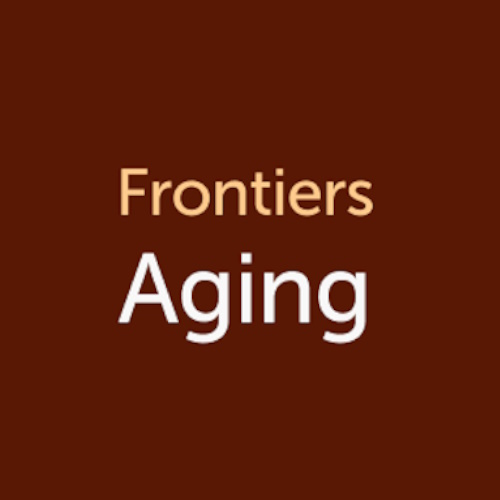For as long as human history can recall, the dream of living longer has been an irresistible pursuit. In ancient times, myths like the Fountain of Youth reflected this deep-seated desire. Today, scientific research has taken up the challenge, moving beyond simply extending life to extending the quality of those years—what scientists call “healthspan.”
Longevity is no longer just about living longer; it’s about how we live those extended years, striving for a life free from debilitating age-related diseases. But how do some people manage to live for over a century in relatively good health while the rest of us succumb to age-related diseases earlier in life?
The answer may lie within our genetic makeup, specifically in a complex immune system protein called NLRP3. This article explores groundbreaking research revealing how targeting NLRP3 could potentially help everyone enjoy the extended health benefits seen in centenarians.
Uniqueness of Centenarians
When we think of people who live to be 100 or more, healthy centenarians, or HCs, come to mind. These are individuals who not only reach an exceptional age but also do so in good physical and mental health. Most people, as they age, experience a gradual decline in health, with the last years of life spent battling multiple age-related diseases like dementia, heart disease, and arthritis. In contrast, centenarians often compress their years of illness into a much shorter period toward the end of their lives.
So, what makes centenarians different from the rest of us? Is it purely luck, or could there be a genetic advantage that sets them apart? Scientists have started to uncover the answer, and it appears that NLRP3, a crucial component of the immune system, plays a central role in this exceptional longevity.
Central Role of NLRP3 in Ageing
NLRP3, short for NOD-like receptor family, pyrin domain-containing 3, is a protein that helps regulate the immune system’s response to infection and cellular damage. It acts like a sensor, identifying harmful substances like bacteria, viruses, or damaged cells and triggering an immune response. While this is critical for fighting infections and healing wounds, research shows that NLRP3 also has a downside, particularly as we age.
As people grow older, NLRP3 becomes over-activated, contributing to low-grade, chronic inflammation. This type of inflammation is silent but dangerous, slowly leading to various age-related diseases. The term "inflammaging" has been coined to describe this phenomenon—a state of chronic, systemic inflammation that accelerates the ageing process.
But what if we could control this inflammation by targeting NLRP3? Recent studies suggest that this could be the key to extending healthspan, the period of life spent in good health, and not just lifespan, the number of years lived.
Understanding the Immune System and NLRP3
To understand how NLRP3 works, we first need to take a closer look at how the immune system functions. The immune system consists of two parts: the innate immune system and the adaptive immune system. The innate immune system is our body’s first line of defense, responsible for detecting and responding to foreign invaders quickly. NLRP3 is a crucial part of this system.
When NLRP3 detects damage or pathogens, it forms a complex structure called an inflammasome, which triggers the release of molecules like IL-1β and IL-18, leading to inflammation. This process is beneficial in the short term, as it helps the body deal with infections and injuries. However, prolonged activation of NLRP3, as seen in ageing, can lead to the constant release of these inflammatory molecules, causing tissue damage and contributing to diseases such as arthritis, heart disease, and Alzheimer’s.
NLRP3: Short-Term Benefits and Long-Term Costs
The research paper highlights the dual nature of NLRP3 activation—its short-term benefits and long-term costs. In the short term, NLRP3 helps restore health by clearing infections and damaged cells through a process called pyroptosis, a type of programmed cell death. This process allows the immune system to fight infections swiftly and effectively, leading to recovery.
However, over time, NLRP3 can become over-primed and hyperactivated, leading to chronic inflammation. This is especially problematic as we age, because our bodies produce more self-derived signals like damaged mitochondria and misfolded proteins that continuously activate NLRP3. This creates a feedback loop of inflammation, which contributes to many age-related diseases and accelerates ageing.
Chronic Activation and Its Consequences
The paper goes into great detail on the consequences of chronic NLRP3 activation. This prolonged activation is linked to a host of age-related conditions, including cardiovascular disease, type II diabetes, neurodegenerative diseases like Alzheimer’s, and even cancer. Each of these conditions is driven, at least in part, by low-grade inflammation, which is exacerbated by the overactivity of NLRP3.
For example, in cardiovascular disease, cholesterol crystals can activate NLRP3, leading to inflammation within blood vessels and contributing to atherosclerosis (the buildup of plaque in arteries). In the brain, NLRP3 activation by amyloid-β plaques and tau proteins is a key driver of Alzheimer’s disease. And in type II diabetes, fat accumulation and insulin resistance trigger NLRP3 activation, leading to increased inflammation in the body’s fat tissues.
The message is clear: while NLRP3 plays an essential role in immune function, its chronic activation is harmful, contributing to a wide range of diseases that shorten healthspan.
NLRP3’s Impact on Age-Related Diseases
One of the most exciting findings in the research is that by inhibiting NLRP3, we can potentially delay or prevent many age-related diseases. In animal models, genetically knocking out NLRP3 leads to healthier ageing. Mice with NLRP3 gene deletions live longer and exhibit delayed onset of age-related conditions like bone loss, cognitive decline, and immune system deterioration.
Interestingly, healthy centenarians exhibit NLRP3 levels similar to those of much younger individuals, while diseased centenarians have elevated NLRP3 levels, though not as high as the general elderly population. This points to a genetic or biological advantage in centenarians that allows them to avoid the negative consequences of NLRP3 overactivation.
Genetic Advantages of Healthy Centenarians
What makes centenarians different from the rest of us? The paper suggests that centenarians likely have one or more genetic advantages that protect them from the harmful effects of NLRP3 activation. Studies of centenarian families have shown that their offspring also tend to live longer and healthier lives, pointing to the hereditary nature of these advantages.
The discovery of such genetic factors is a breakthrough in ageing research. For instance, certain variants of the APOE gene have been found to protect against Alzheimer’s disease, and other genetic variants are being investigated for their role in promoting healthy ageing. The key takeaway is that by identifying and understanding these genetic factors, we may be able to develop therapies that mimic their effects, allowing more people to enjoy the extended healthspan of centenarians.
Extending Healthspan by Targeting NLRP3
So, how can we translate these findings into real-world applications? One of the most promising approaches is the development of drugs that target NLRP3. Scientists are currently experimenting with NLRP3 inhibitors in animal models, and the results are promising. Inhibiting NLRP3 in aged mice extends their healthspan, improves their physical and cognitive abilities, and delays the onset of age-related diseases.
Moreover, certain lifestyle interventions, such as caloric restriction and ketogenic diets, have been shown to reduce NLRP3 activation, possibly explaining their health-boosting effects. Both caloric restriction and ketogenic diets activate a molecule called β-hydroxybutyrate (BHB), which inhibits NLRP3, thereby reducing inflammation and promoting healthier ageing.
Researchers are optimistic that these findings could lead to the development of novel therapies that slow down the ageing process, prevent age-related diseases, and allow people to live longer, healthier lives.
Moving Toward Healthier Ageing
In the quest for a longer life, researchers are discovering that quality matters just as much as quantity. Living to 100 is an admirable goal, but the real prize lies in maintaining good health throughout those years. By understanding the mechanisms behind the exceptional health of centenarians, particularly the role of NLRP3 in ageing, scientists are paving the way toward a future where extended healthspan is achievable for everyone.
The study is published in the journal Frontiers in Aging by Stef F. Verlinden.





